May 2023, Barcelona
As I enjoyed a sunset sailing cruise around the city, I noticed a massive monstrosity at the port, blocking out the light from the gently setting sun. A gigantic vessel was billowing out thick black smoke into the evening sea air. It blanketed the port and marina area of the city, making the iconic cityscape in the background barely visible.
Turning to the boat's skipper, I asked how they felt about these massive cruise vessels docking in their city. What followed was a foul-mouthed tirade bemoaning the pollution, eyesore and the transformation of the area around the port into a hive of kitschy souvenir stores and overpriced touristy restaurants.
She claimed that 'shore excursions', that is, when the multitudes from the cruise ships are let loose in a city, were far more of a nuisance than an economic benefit, because in their limited time on the shore, the ocean-dwellers did little more than buy a coffee and a fridge magnet. But more than that, she blasted the cruise ships themselves for the terrible air and water pollution they created. The picture she painted was of a lose-lose scenario for any city burdened with having to welcome this guest.
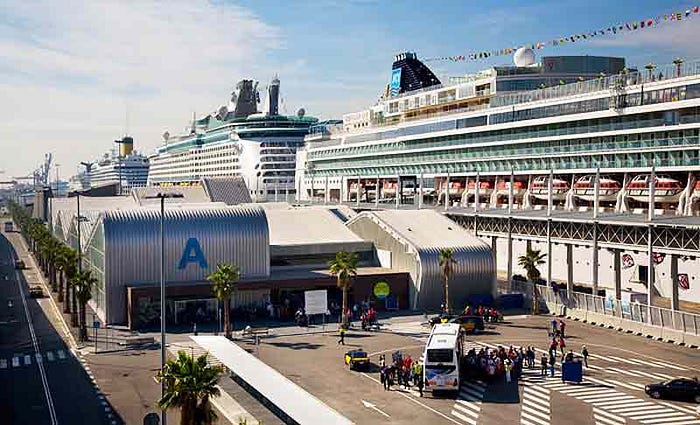
This got me wondering — if they are so universally maligned, how are cruise ships still such a big thing?
Ignore the anger, look at the numbers
A few months after my trip came the news that Barcelona had banned cruise ships from its Nord wharf (where I had seen the vessel). The city had joined Venice in saying 'no' to these mammoth liners, making them instead dock 30 minutes outside the city. Amsterdam followed suit, but for river cruises, which had grown to untenable levels over the last few years. Other cities around the continent may follow suit. All of this sounds promising, right?
Well, actually, the reality is that the cruise ship industry is more popular than ever. In 2023 it was a $8.2BN industry, and is forecasted by some to grow 12.5% year on year until the end of the decade. Never mind the ill-effects of the pandemic — cruise travel in numbers for 2023 has already surpassed 2019. While it might readjust in the coming years after the pent-up demand, cruise companies are working hard to make sure it keeps going up and up.
New ships are joining the party
In early 2024, market leader Royal Caribbean launched the largest cruise ship in the world, the Icon of the Seas. The industry went mad for it. Smartly, the company also proclaimed that this would be the 'greenest' and most sustainable ocean cruise ship ever, heading off some opposition early.
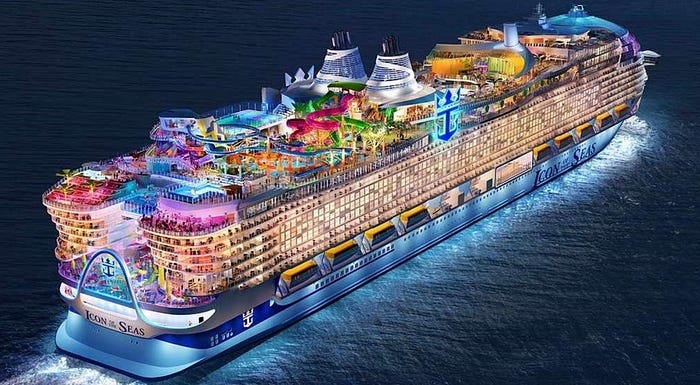
This meant that the biggest debate about this new Howl's Moving Castle of the maritime world was whether or not it could be considered ugly. That hardly matters to the over 7,500 people that board this vessel for a luxurious pillaging of the air and sea, because inside, it's a floating city of wonder.
Don't believe me?
Not to be outdone, Carnival Cruises, the second biggest cruise operator unveiled its own nautical beast, the Sun Princess, which can hold over 5,000 guests. This is one of 10 new large cruise ships expected to be completed in 2024, increasing capacity by over 25,000 people. This is to add to the 30,000,000 cruise passengers planned to be taken in 2024, a doubling of the number in 2008.
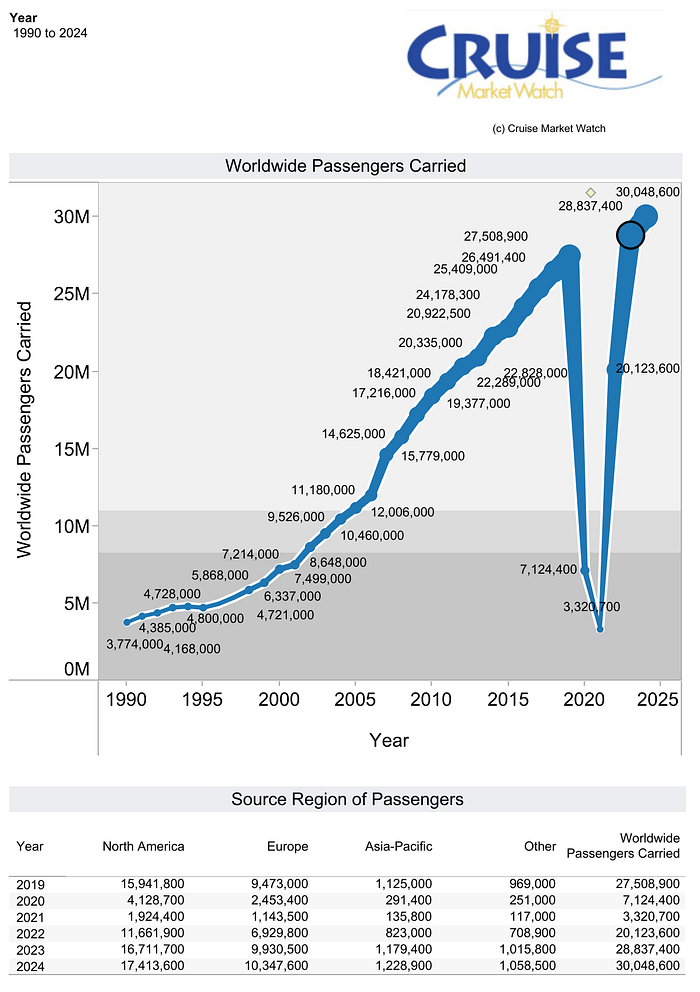
Since it's clear that nothing (short of a global pandemic) can stop the cruise industry (and then only temporarily), it's worth reminding ourselves of why they are such a big environmental disaster.
Cruises are multi-dimensional ravagers
These days we are (rightly) focused on greenhouse gas emissions when discussing the merits and demerits of any activity. But when it comes to cruises, we need to examine the bigger picture to see how much damage is actually being done. Here are some of the main concerns with cruises, in no particular order:
Overtourism
Can you have too much of a good thing? Well, 2023 (and 2019, for those that can remember it) showed us that yes, it is possible to have too much tourism. Shore excursions from cruise ships are among the most notorious for crowding historic city centres, since thousands of people are released into the confines of a small area at the same time, and for just a few hours.
Lack of use of shore power
When cruise ships are in port, they still keep all the lights and pools onboard on. This is for the average 30–40% of people who stay onboard. For this large amount of power needed, they continue to burn heavy fuel (and more recently, diesel and sometimes liquified natural gas (LNG)). This is despite a lot of ports now having the ability for the ship to plug into the grid, thereby using the local power source available (not always renewable, but always better than whatever the hell's coming out of that smokestack).
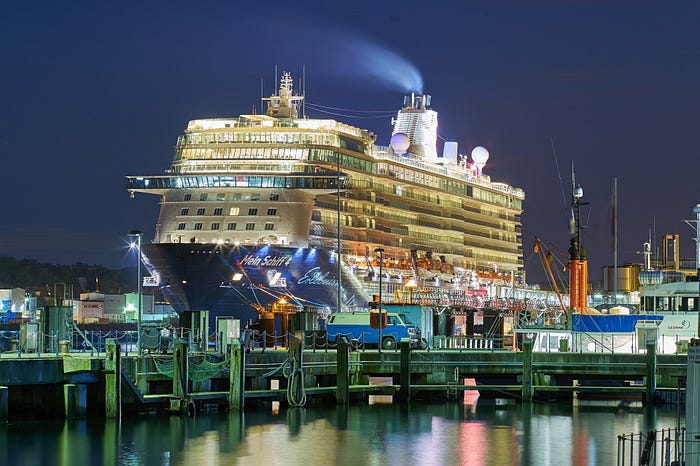
There'd also be a nice contribution to the local economy from the payment for the electricity. But evidence shows that despite having the capability, most ships do not plug into the grid because it is more expensive than burning the (tax-free) marine fuel they have on board.
Greenhouse gas emissions
Otago University academic Dr Inga Smith calculated that a cruise ship holiday to New Zealand emits four times the greenhouse gas emissions than an equivalent holiday flying and staying in hotels — Wellington Scoop
One cruise ship produces roughly the same amount of carbon emissions as 12,000 cars. Even if you assume that these cars carry 2 persons each, that puts cruises' emissions 5 times higher than the car. Cruise ships are literally the least climate-friendly way to see the world. Unless, of course, you regularly fly in business class.
And it's not just CO2 emissions. Modern cruise ships have been fitted with LNG, and the companies are touting it as a 'green alternative' to the usual thick bunker fuel these ships tend to use. While LNG does have a lower CO2 footprint, it leaks methane into the air, which is many times stronger as a greenhouse gas than carbon in the short term.
Pollution
With cruises, it's not just greenhouse gases that we have to worry about. Large amounts of sulphur are released from the combustion of the heavy fuel used by most cruise ships. In fact, studies show that the air on board a cruise ship is usually like the air over a polluted city like Mumbai or Jakarta. Who says cruises are not authentic experiences?
In addition to air pollution, there is a lot of water pollution in the form of waste water and oil that is emitted from these vessels, not to mention light and sound pollution that messes with marine animals' hunting and birds' migrations in and around the oceans. The video below gives a short but succinct explanation of this.
Hotbed for diseases
Cruises are well known for their lavish buffets, but they are also a buffet for viruses and bacteria. We all remember the news of super spreaders on cruise liners during the pandemic. It doesn't help that the usual demographic of cruise-takers is older and more prone to illness.
Minimal contributions to the local economy
Finally, cruise companies are well-known tax avoiders, with domiciles in tax-friendly nations. A simple scan through their annual statements will confirm how little tax they pay. And the people that come ashore? Well, studies show they spend 40% less than the average tourist on local services.
Doesn't make for pretty reading, right? So what's going on? Why the lack of regulation and the continued growth in the cruise industry? I looked into this and found three key reasons:
1. Public perception in key markets is positive
Despite the data I just quoted above, locals in the tourism industry would understandably be nervous when the city tells them that suddenly the footfall in their well-positioned, high-rent stores would fall significantly, by orders of magnitude even. This translates to loss of jobs and income for a specific segment of people. Thus there is immense pushback from these people, who see cruise ships as just a minor inconvenience — a necessary evil.
2. Excellence in greenwashing by cruise companies
The greenwashing efforts of cruise companies are laudable — and the results are there for all to see. A recent 2023 survey showed 50% of US respondents felt cruises were 'eco-friendly'. While this was a small sample (just over 1000), the fact that they said cruises were more eco-friendly than flying (40% — also a ridiculously high number) shows that cruises still have a good image.
The current emphasis is on showing how much LNG the ships use (in truth, it's usually only used when docked, or not at all and still emits a lot of GHGs) and how it can use shore power (again, in truth, it's very rarely used because of cost). It's so blatant that the EU Transport and Environment Federation made a satirical, PSA style video to highlight the greenwashing.
This expert greenwashing then affects things like the company's ESG ratings, which for the largest cruise companies are 'Medium', which increases their ability to gain investment.
3. Lobbying efforts keep regulation at bay
Lobbying is a key part of keeping the cruise industry afloat. Research shows how they've recently used lobbying efforts to get their ships back in the water after the pandemic. Just recently, in the face of increased environmental regulation about how long ships can spend in port, a filing showed how cruise lobbies are trying to exclude themselves from this regulation so they can continue burning dirty fuel in port. This is despite commitments to sustainability made by all of the large cruise companies in the recent past.
Are there any 'good' cruises?
..a good cruise is the one that doesn't come. It's a bit like a good mess … it's the one that doesn't happen — Remy Yves, Stop Croisières, (Source)
Cruises are unnecessary. They don't transport people (air travel), clothe people (fast fashion) or feed people (meat industry). Most cities have everything a cruise does — just with a little less convenience.
Even so, if you still wanted to go on a cruise, or recommend 'one of the good ones', you could look to the Friends of the Earth's Cruise Report Card. Here's a screenshot from the latest version. It doesn't make for pretty reading.
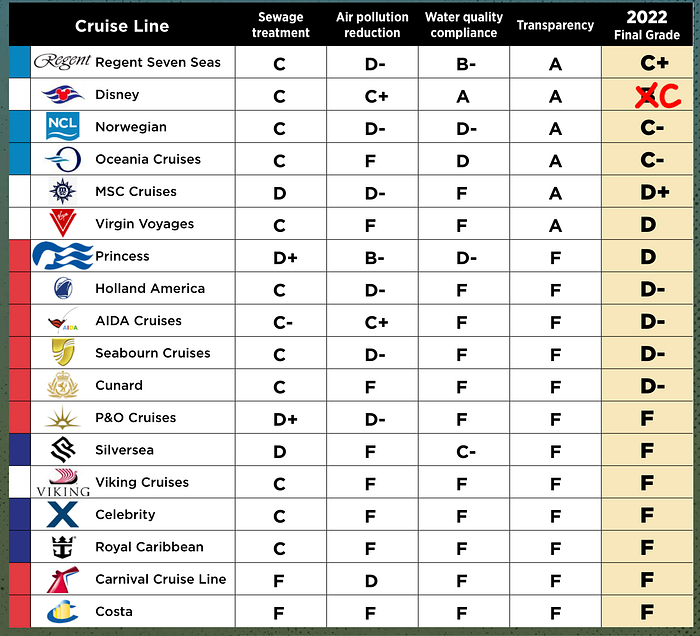
What next?
It seems that cruise companies, like Big Oil and tobacco companies, are living on a different planet, governed by their own rules. Yet it is our planet they are living on.
Thousands of people are carted around in floating cities to see the Arctic glaciers — that is the definition of irony. Cruise ships take tourists to the Bahamas to see the corals, while relegating those same corals, and the marine life around them to certain death, just by their very existence.
Banning these large polluters will take a titanic effort, and it's not something that will happen any time soon, it seems. All we can do is share the message of just how horrible and pointless these cruises are. Maybe one day in the future cruise bookings, like cigarettes, will come with a health warning!

